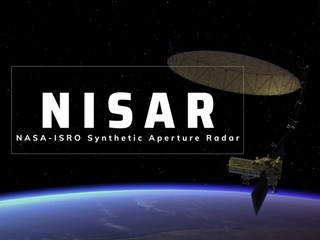Don't have an account?
Login to EaseMyDeal

2023-11-27
156
In the vast expanse of space exploration, the intricate dance between nations and agencies plays a pivotal role in pushing the boundaries of scientific discovery and technological innovation. Recently, NASA Administrator Bill Nelson embarked on a diplomatic journey that not only symbolizes collaboration but also unveils a groundbreaking project – the NASA ISRO Synthetic Aperture Radar (NISAR). His travels took him through India and the United Arab Emirates (UAE), igniting discussions centered on fostering bilateral cooperation in innovation and research, particularly in the domains of human exploration and Earth science.
NISAR: A Glimpse into Earth's Dynamic Ecosystems
NISAR, set for launch in 2024, represents a pioneering joint effort between NASA and the Indian Space Research Organization (ISRO). It stands poised to revolutionize our comprehension of Earth's intricacies, capturing comprehensive data every 12 days. This groundbreaking Earth-observing instrument holds the promise of providing unparalleled insights into dynamic ecosystems, from forests to wetlands and agricultural lands.
The payload of NISAR, ensconced in a gold-colored thermal blanket, harbors two essential radar systems. The S-band radar is engineered to unravel crucial details about crop structures and land/ice roughness, while the L-band instrument focuses on penetrating dense forest canopies to study intricate tree trunks. Their wavelengths of approximately 4 inches (S-band) and 10 inches (L-band) grant them the exceptional ability to collect data day and night, overcoming cloud-related obstacles that impede other observation methods.
The Collaborative Journey of NISAR's Payload
The saga of NISAR's payload is a testament to collaboration and innovation. Crafted at the Space Applications Centre in Ahmedabad, India, the S-band radar embarks on a transformative journey to NASA's Jet Propulsion Laboratory (JPL) in Southern California. Here, in harmony with the L-band radar developed by JPL engineers, these systems are seamlessly integrated into the payload's robust framework.
The subsequent leg of the journey leads the payload to the U R Rao Satellite Centre (URSC) in Bengaluru, where engineers and technicians collaborate with JPL teams to breathe life into the spacecraft's main body, known as the "bus." Enveloped in protective blue blanketing, the bus amalgamates components and systems contributed by both ISRO and JPL, assuming a pivotal role in powering, navigating, controlling, and communicating during the mission.
NISAR: A Testament to Collaborative Synergy
The collaboration between NASA and ISRO culminates in NISAR, marking the first-ever joint hardware development initiative between these esteemed space agencies. This union of talents embodies the spirit of unraveling the secrets of our planet. Essential contributions from JPL, NASA, and URSC compose the symphony of innovation propelling NISAR toward unprecedented scientific achievements.
Artemis Accord: Pioneering Collaborative Strides in Space Exploration
In the realm of space exploration, recent strides have been made to strengthen cooperation, exemplified by the Artemis Accord between India and the United States. This groundbreaking agreement signifies a substantial boost to collaborative efforts in lunar exploration and future crewed missions. By uniting forces under this historic accord, India and the US pave the way for enhanced knowledge exchange and joint endeavors shaping the future of space exploration.
Conclusion
As NASA Administrator Bill Nelson's diplomatic journey traverses through critical meetings and discussions, the unveiling of NISAR stands as a monumental leap in understanding Earth's dynamics. The collaborative synergy between NASA and ISRO encapsulates the spirit of international cooperation, while agreements like the Artemis Accord set the stage for an era of shared discoveries and pioneering advancements in space exploration. The journey of NISAR, from inception to anticipated launch, serves as a beacon of hope and collaboration, illuminating the path toward unlocking the mysteries of our planet and the universe beyond.

Write A Comment